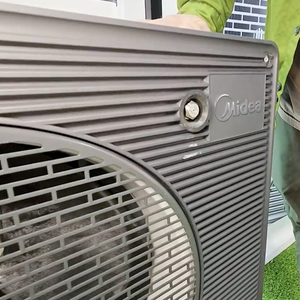My wife and I just completed building our home in Idaho——did much of the work ourselves as finding contractors I. Our areas was difficult——everyone wanted top dollar for poor quality work.
In building our house we tried our best to using building science——many concepts and ideas we got from the Fine Home building pod cast.
Our home is 420o square feet with very tall ceiling in the living room. We have 3 inches of exterior rock wool insulation with a rain screen, spray on elastomer house wrap, rock wool insulation in the wall cavities, everything in air tight, Intello wrap on the inside we have a double air barrier between the spray on house wrap and Intello. Our total R value in the walls is R50 and R 80 in the lid. Installed good windows made air tight.
We installed a make up air system and Zender ERV. Heating source is radiant floor heating with a heat pump and hydronic units for air conditioning during the summer.
keeping the house cool during the summer was awsome.
Now that’s it winter our house is chronically too warm especially when all the kids are home from college. The heat pump is rarely turning on. Even when it’s dropping into the 20s at night out home stays too warm.
The air quality in the home is really good and we have no humidity issues.
When I am working in my office during the day the temp goes from 67 to 74+.
We are having to keep doors and windows open to cool the house down.
The question I have is there a better way to regulate the temperature in the house?
I feel like we over did the air sealing and insulation——doing the work ourselves was not that much more money to hit the higher R values.



















Replies
Are you receiving solar gain?
It’s only the end of December, 60 deg in NW Ohio today. I’ve only passed through your state (spring and fall), what outdoor high/lows are you having now and in the coming months?
Temperature is the result of heat in minus heat out.
Sounds like you did a good job of sealing and insulating.
Heat in is from you, and from things you use electricity to run. (TV, Computers, Lights.....) Also from domestic hot water. (and solar input)
It may be worth looking at your energy consumers and see if any of them can be reduced.
It also is worth reviewing the control settings of the ERV. Depending on the model, you may be able to adjust the bypass, and air volume to help with your overheating issues.
Contacting the ERV vendor for tech support is a good idea.
It may be you would benefit from a larger capacity unit.
Did you install air ducts from bathroom and kitchen to the ERV with dedicated controls?
If the issue is mostly a daily peak in temperature, you may want to look at phase change materials to add to the thermal mass.
Thank you for the advice.
It’s been unseasonably warm so far this winter——highs upper 30s and lows in the low 30s so far.
We are using the Zender 450 and there is a dedicated duct to each of the restrooms and showers with a booster switch sent to each.
The house is built on a slab roughly 8 inches thick——the house is a barndominium——and the walls ended up being very thick—-1between the walls and slab foundation we have a lot of thermal mass.
I did not even think about hot water heater——we have hot water lines going through the concrete slab——-every time we take a shower or do laundry we are heating the floors.
The master bedroom is also on the bottom floor and the room was made sound proof with extra insulation in all the surrounding walls. The master bedroom has a thick insulation on all the walls——I bet our body heat is enough to heat the room on all but the coldest days.
I will call Zender to see if I can bypass some of the heat exchange.
I wonder if I should turn off the heater floors and use the hydronic units to heat the house instead?
At least the heating bills is low——-I was not expecting to be too warm.
Lots of things to consider when designing an energy efficient home.
Consider opening a window.
What’s wrong with opening a window?